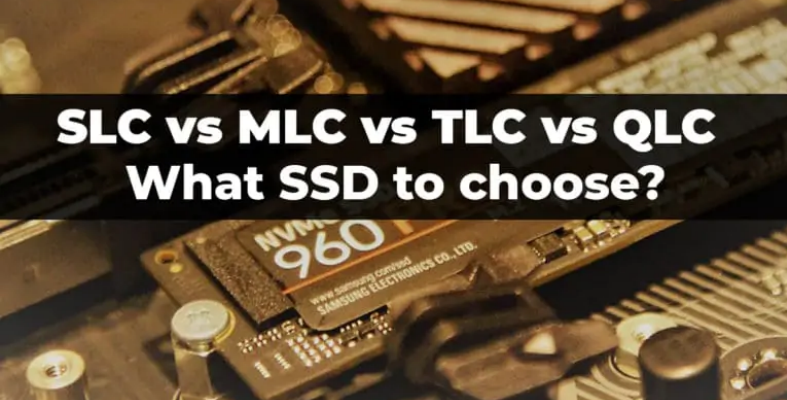Introduction
Solid-state drives (SSDs) have revolutionized the storage landscape, offering faster performance, improved reliability, and compact form factors compared to traditional Hard Disk Drives (HDDs). A critical factor affecting an SSD’s performance, endurance, and cost is its memory type. SSDs come in various memory types, including Single-Level Cell (SLC), Multi-Level Cell (MLC), Triple-Level Cell (TLC), and Quad-Level Cell (QLC). Each memory type has characteristics that make it suitable for specific use cases. In this article, we will delve into the intricacies of these SSD memory types, compare their performance and endurance, discuss considerations for different use cases, and explore future trends in SSD technology.
Understanding SSD Memory Types
SLC (Single-Level Cell)
SLC is the most basic and durable SSD memory type. Each cell stores only one bit of data, allowing for faster read and write speeds and extended lifespan due to lower write amplification. SLC SSDs are often used in industrial applications and mission-critical systems where performance and reliability are paramount.
MLC (Multi-Level Cell)
MLC SSDs store multiple bits of data in each cell, typically two bits. While MLC offers higher storage density and cost efficiency than SLC, it also sacrifices some performance and endurance. MLC SSDs balance performance and price and find use in consumer electronics and specific enterprise scenarios.
TLC (Triple-Level Cell)
TLC SSDs store three bits of data in each cell, making them more cost-effective in terms of storage capacity. However, this increased density comes at the expense of lower write speeds and a shorter lifespan than SLC and MLC SSDs. TLC SSDs are commonly found in mainstream laptops and desktops.
1.4. QLC (Quad-Level Cell)
QLC SSDs take the concept further by storing four data bits in each cell. This results in even higher storage capacities and lower costs but with reduced performance and endurance. QLC SSDs are suitable for scenarios where large storage capacities are crucial, such as bulk data storage and backup solutions.
Performance and Endurance Comparison
SLC vs. MLC
SLC SSDs outperform MLC SSDs in terms of both read and write speeds. Additionally, SLC SSDs have the highest endurance due to lower write amplification. MLC SSDs, while slightly slower, still offer good performance and moderate endurance. The choice between SLC and MLC depends on the application’s specific requirements.
MLC vs. TLC
MLC SSDs offer better performance and endurance compared to TLC SSDs. TLC SSDs are more budget-friendly but are prone to higher write amplification and a shorter lifespan. The decision here hinges on finding the right balance between performance, cost, and longevity.
TLC vs. QLC
TLC SSDs generally outperform QLC SSDs, with higher write speeds and better endurance. QLC SSDs prioritize capacity and cost-effectiveness, making them suitable for scenarios where performance is less critical. However, they might be better for applications with heavy write workloads.
Choosing the Right SSD Memory Type
Selecting the appropriate SSD memory type depends on your specific needs:
- SLC: Choose SLC for demanding applications requiring top-tier performance and extended lifespan.
- MLC: Opt for MLC if you seek a balance between performance and cost for consumer or enterprise use.
- TLC: Consider TLC for mainstream consumer devices where cost efficiency and moderate performance are key.
- QLC: Use QLC for scenarios prioritizing large storage capacities and budget-friendly solutions over top-notch performance.
Considerations for Your Use Case
Performance-Centric Workloads
For tasks demanding high-speed data transfers and low latency, SLC and MLC SSDs are better suited due to their superior performance and endurance.
Mixed-Use Workloads
MLC SSDs strike a good balance for workloads involving a mix of read and write operations. They offer decent performance and reasonable endurance.
Consumer Applications
TLC SSDs cater to consumer electronics where performance and longevity are satisfactory for typical usage patterns.
Enterprise and Data Center Needs
Enterprise environments may benefit from a mix of SSD types, with SLC and MLC for critical systems and TLC for general-purpose applications with cost considerations.
Future Trends and Conclusion
As technology advances, SSD manufacturers continuously explore ways to enhance SSD performance, endurance, and capacity. Emerging memory technologies like 3D XPoint promise even greater speeds and durability. When choosing an SSD, aligning your selection with your specific requirements and anticipated workload is crucial. Whether you prioritize performance, capacity, or cost efficiency, an SSD memory type is tailored to meet your needs. By understanding the differences between SLC, MLC, TLC, and QLC, you can make an informed decision that will optimize your storage experience for years to come.
Conclusion
In SSDs, memory types are pivotal in determining performance, endurance, and cost. The choice between SLC, MLC, TLC, and QLC depends on many factors, including application requirements, workload characteristics, and budget constraints. By assessing your needs accurately and understanding the strengths and weaknesses of each memory type, you can confidently choose the SSD that aligns with your specific demands, ensuring a seamless and efficient computing experience.

